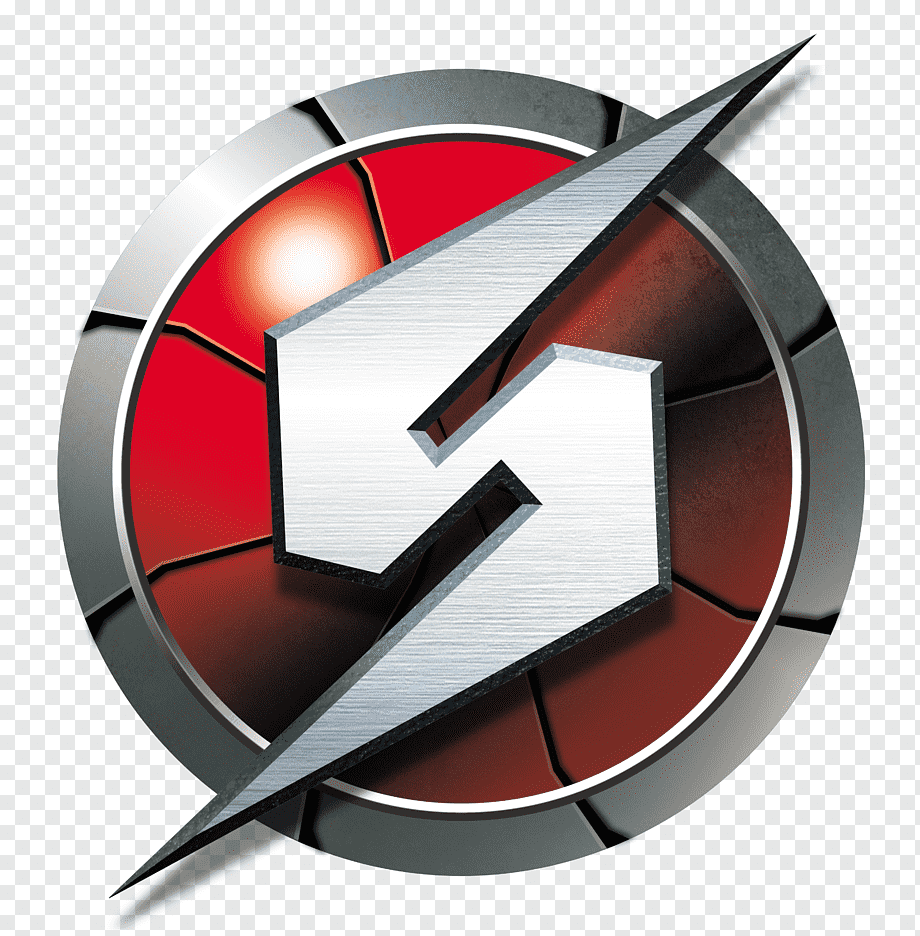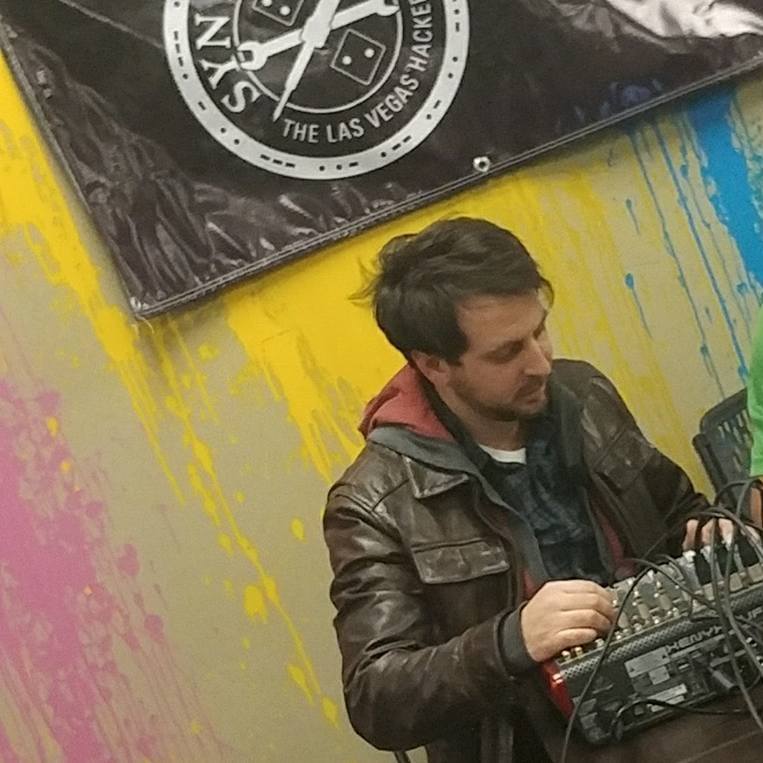The original Steam Controller is undoubtedly one of the coolest pieces of gear I own—and one of the most innovative, too.
I got mine right when it launched in 2015. I wanted to solve a very real problem: I was trying to turn my PC into a console.
You see, Valve had Big Picture Mode, which truly turned your PC into a console-like experience. The problem was that some of my favorite PC games didn’t support controllers. They were keyboard-and-mouse only.
But then—here comes the Steam Controller. Suddenly, I was able to reprogram all the inputs. I could take basic keys, like the spacebar, and map them to a button on the controller—like the A button. And once you did that, you could share your controller configuration with the Steam community, or reuse a config someone else already made. It was pretty awesome.
And those dual trackpads? They were swank. Incredible for first-person shooters and real-time strategy games. They were the next best thing to a mouse. And because of the angle of the handles, it all felt very comfortable in the hand—probably the most comfortable controller experience I’ve ever had.
It’s funny—just a little over five years ago, gamers hated it. Not because they ever used one, but because it was a failure. And as we all know about gamers, there’s nothing they hate more than a failure. It was dismissed as a novelty—something no one would ever use again.
Well, Valve had the last laugh. A few years ago, they released the Steam Deck. And what do you know? It’s a direct evolution of the Steam Controller. And now everyone loves the Steam Deck.
Just take a look at it—it’s got so many of the same things the Steam Controller had: dual trackpads, back paddles, the ability to remap buttons and customize layouts. Having owned a Steam Deck since launch, I can say this confidently: the most killer features on the Deck originated with the Steam Controller.
That said, it wasn’t perfect. There were a few quirks I wish they had fixed. For one, it would’ve been nice if it had dual analog sticks instead of just one. Using a trackpad in place of a right stick is fine in theory, but let’s be real: a trackpad does not replace an analog stick.
Also, unlike most modern controllers, this one didn’t have a rechargeable battery. You needed AA batteries. Now, to be fair, those batteries lasted a long time—but it still would’ve been nicer to just recharge it and forget about replacements.
Then there’s the back paddles. Only two of them. In hindsight, yeah, Valve knew they needed to evolve. I’ve grown so used to having four back paddles on the Steam Deck. They’re incredibly useful—especially in games with lots of inputs. Just good to have.
Still, this was one of the first mainstream controllers to even have back paddles. So hats off to Valve for that.
Honestly, I really wish there was another Steam Controller on the market. I know Hori makes a licensed controller for the Steam Deck in Japan, but it’s missing a core feature the original had: the dual trackpads.
To me, the dual trackpads make the Steam Deck experience. It’s something almost no other handheld has. My wife has a Legion Go, and it does have a trackpad—but only one. And honestly? That makes all the difference. It’s fine. But man… it would’ve been a better handheld with two.
Definitely one of the most innovative controllers ever made.
And yeah, I still use mine. I use it when I dock my handheld. Or when I’m on my living room PC.
No d-pad is an instant dealbreaker.
Edit: Y’know what I’ll properly expand on this. The Steam Controller failed because it tried to replace vital functionality people expect from a controller. The Steam Deck learned from this mistake and just supplemented that functionality.
TBH, the way I see it, the Steam Controller was designed for games I don’t want to play on controller, while being bad for games I do want to play on controller.
It walked so the Steam Deck could run.
Yea the only target audience for the Steam Controller seems to be people who want to play kbm games with a controller if they’re playing on a TV or something. But I reckon most PC gamers who get a controller use it to play on their usual PC setup for games that play better on a controller, they’ll just use kbm for their kbm games.
Honestly, IMO the lack of D-pad was less of an issue than the lack of a second analog stick. The lack of a second stick made the controller almost impossible to use in any game that was designed with 2 sticks in mind. For example Nier Automata 9S hacking minigame was a horrible experience with the Steam controller.
That’s the key. If you’re wanting to play something like Street Fighter VI, the Steam controller probably won’t fly.
But because I wanted to play Dungeon Siege on my TV, it works far better than a traditional controller ever could.
For the Steam controller to work for you, you have to come in with the mentality of it replacing a keyboard-and-mouse.
They’ve made it too niche, basically just fps and rts pad.
I loved mine for Rocket league but was really missing the right stick. And the shoulder buttons were super stiff. And you also absolutely had to set up controls because it was so different and the pads were atrocious replacements for dpad or sticks
It has a D-pad, though…
Where?
The left touch zone is pressable, and four zones are four separate buttons. It’s a bit less convenient to use than a regular d-pad, it’s bigger and you need to reach slightly further, but other than that it works.
That is not a d-pad. That is a touchpad with a plus drawn on it.
It’s actually the other way around, it’s a big d-pad with touchpad capabilities plastered over it. It’s the same physical mechanism as a d-pad, 4-way button, it’s just big.
If you don’t count arbitrary clusters of buttons as a d-pad, I think this is an invalid comparison.
Do you count, e.g., the A/B/X/Y buttons as a d-pad?
D-pad for me, functionally, is a 4 directional buttons clustered together, oriented along the X-Y axis. To conserve parts, it’s quite often made not as 4 buttons but as a combined shifter, because you realistically wouldn’t be pressing the opposite buttons at the same time.
The left track area on the steam controller is that. The buttons are fuzed together (which is normal for D-pad) and big and harder to tell apart (which is less normal)
It didn’t fail because of a lack of a dpad but because of lack of two joysticks, but I’m glad the controller exists because I came to absolutely love the dual touchpads. And I wouldn’t trade the left touchpad a dpad, since I like using it for movement.
I wouldn’t trade the right touchpad for a joystick either, since I like using it to do quick 180s, quick swap between 5-10 inputs to bypass reloading in games like Doom Eternal by setting a dpad modeshift on a click, and touch activate gyro all on one touchpad.
Will probably be the last controller of its kind but I’m glad at least one did get made, since otherwise I’d still just be using a xbox or playstation controller like I did before getting Steam Controller.
If the Steam Controller was designed the way lot of people wanted it than it wouldn’t have been a Steam Controller and just another Xbox or Playstation controller and added nothing new. Would have been more successful but in the end another generic twin joystick controller. So even if it didn’t succeed it brought new things to the table like touch activated gyro and touch pads that could be considered for other controllers in the future.
It actually has d-pad, it’s just combined with one of the touch areas, you can press it like a button, and 4 zones behave like a d-pad. Granted, it’s a bit inconvenient so if you need it often, it’s not the best. But it’s there.
Yeah, but counter point.
It’s got Steam branding.
Another win for the good guys.
Why are Valve the good guys?
I was being sarcastic.
Valve are monopolistic, popularised micro transactions, directly profit from loot boxes and gambling.
If gamers weren’t so brainwashed and Stockholmed syndromed they would realise that.
Definitely needed the /s there. I’m sure you saw the 3 or so other comments who were explaining why Valve are good guys, lol
That’s why I don’t put the /s there. Always draws out the Stockholmed masses.
I prefer AA for controllers actually. Rechargeable AAs are good these days and you can just swap them out. I actually really hate this trend of integrated batteries in things where it isnt necessary. Yeah we need new form factors of replaceable batteries, but the switch from replaceable and standardized to neither is definitely causing problems and costing us money.
8Bitdo controllers are pretty hit and miss, but this is a big hit for them. The Pro series (and maybe others) comes with a rechargeable battery but the slot also fits 2 AA batteries.
If only they could get their software more feature rich and consistent.
I mocked Xbox controllers for years due to them using AA batteries… until I actually started using one with my PC. Now, I wish all controllers used them. It’s vastly more convenient than charging via USB cable.
Trying to find replacement batteries for integrated batteries is a pain too, since might not be able to find an OEM replacement or battery from a reputable brand. So you end up having to go with whatever random no name battery that could be worse than the OEM battery and end up dying after less than a year.
My preference is rechargeable AA or AAA. And even better if the controller itself can recharge the battery like drone controllers.
I got some good rechargeable AA for my controllers about three years ago and will never go back. I have one pair more than controllers and I always have a charged pair read to switch out if needed.
I got 2500mAh batteries from duracell and the charge lasts for days of activity on my xbox controllers. Longer than my PS4 controllers with integrated battery for sure.
I’m still using the same AA eneloops I used since I picked up my Steam Controller all the way back in 2015-2016. And I also used it with my 360 controller too. Just keeps chugging along being good for a month before I need to swap.
Yeah the PS4 battery life has been crap and I don’t know why. Was finally able to replace Sony controllers with 8bitdo now that Steam provides support for the extra buttons to be mapped to unique keys and use analog triggers and gyro together. So been nice not having to spend money on the dualsense, which doesn’t even have hall effects/TMR sticks.
I bought two packs of Eneloops from Dell in 2007 that are still constantly in use. I haven’t noticed any degradation. I can only imagine how many alkaline batteries these things have replaced.
It’s funny—just a little over five years ago, gamers hated it. Not because they ever used one, but because it was a failure. And as we all know about gamers, there’s nothing they hate more than a failure.
Nice try, but that’s not why I hated it.
This smug revisionism triggers me hard. As a hard core steam fan I loved the idea of the SC, I bought it and really tried to use it, but the reality was just too clunky for primary use. It has no dpad, a single crappy convex analog stick, terribly placed ABXY buttons, horrible shoulder buttons, and just a bit too much input lag on the trackpads. On top all that was (actually, still is) a remapping system that’s way too convoluted to use regularly. There’s also the sad fact that alarmingly many games don’t allow simultaneous gamepad and mouse inputs, and simulating the mouse through right stick inputs feels like shit. I really didn’t find any use case where it’s ergonomically superior to a regular gamepad beside the always cited Civ on the Couch, and I’ve tried with sooo many games.
The deck’s control layout fixes most of the issues – the placement is better (except maybe the Salvador Dali inspired B button but I digress), there is a great d pad, two pretty good analog sticks and the input is snappier. Surprise surprise, the deck is a success.
Was the SC innovative, bold and ahead of its time in many ways? Sure. Was it a good controller to play games with? Hell no.
Fully agree. I tried to make the SC work and wrote off a lot of it as “I’m just not used to it”, but it really is asking a lot. In its defence, it was a first run product. The fact that it’s still ass usable and as weird is impressive enough to me. But it’s better as a piece of gaming history than a good product. It was just a good try.
I also agree with the Steam deck controls being actually good. I want the SC2 that’s just a steam deck without the screen or computer.
So I guess the opposite of the steam brick.
I’d gladly pay $100 to have a steam deck like control scheme for my desktop. Rechargeable batteries and a Linux first design would be awesome. I don’t mind just using cables all the time, but I would like better wireless options for Linux gamepads (though to be fair, I haven’t tried connecting a wireless controller to a Linux box in 5 years).
I bought it and really tried to use it, but the reality was just too clunky for primary use. It has no dpad, a single crappy convex analog stick, terribly placed ABXY buttons, horrible shoulder buttons, and just a bit too much input lag on the trackpads.
Hard truths.
Why did they feel the need to replace analog controls with these weird, inconsistently responsive, difficult to map touch controls when every other console platform had already demonstrated why that’s a bad idea?
Was the SC innovative, bold and ahead of its time in many ways?
NO. It was kitsch and poorly engineered and obviously not play tested sufficiently before release. It was a hobbyist’s attempt at reinventing the mousetrap that got shoved into a major distribution pipeline when Playstation and Nintendo and XBox had already demonstrated why you don’t build controllers this way ten years earlier.
Why did they feel the need to replace analog controls with these weird, inconsistently responsive, difficult to map touch controls when every other console platform had already demonstrated why that’s a bad idea?
I have no idea what you’re talking about. The DS4 had a trackpad that was clearly positioned and intended for menu navigation. Nobody used trackpads as a primary game control input before the SC. That’s not because sticks are some god-given pinnacle of technology but because potentiometer-based sticks are cheap and people are used to them. Analog sticks were always, and still are, a crappy way to control a camera. Building a 1:1 thumb based input source into a controller absolutely was innovative and, like it or hate it, I don’t see how you can contest that. The Steam Deck’s pads are actually pretty great to use.
Playstation and Nintendo and XBox had already demonstrated why you don’t build controllers this way ten years earlier.
Again, what are you talking about? The SC was released in 2015.
Ive never been a fan of joysticks, so when they announced this I was super excited for the track pads. I wanted to love them, but I could never get used to them. They feel super unnatural, even for FPS, to the point where I was longing for joysticks.
I spent more time fucking with that thing’s settings than actually playing games. Give me a normal controller every day of the week. Just cause it was niche doesn’t meant it was good.
The touchpads always made my thumbs feel weird after a short time. It was a functional marvel, but I couldn’t use it for long.
Behold! The perfect controller layout, from the far future:
spoiler

I really liked it, especially for FPS/TPS
One thing I think it was missing is some kind of native API. It emulated keyboard/mouse or gamepad, or both. And it kind of worked, but sometimes a bit clunky. Like if you tried to use it as mouse for aiming and as gamepad stick game would be confused and switch control hints from gamepad to keyboard/mouse and back.
With native API developers could’ve directly implement it as another type of controller and add things like hints saying “use right trackpad to aim”, tweek controls mapping for it’s layout, sensitivity, etc
Not sure how many developers would’ve supported that though
Prey was great in that department actually having a config that mapped mouse to the right touchpad instead of emulating a joystick like so many games did, and then had different action sets that automatically switched depending on if it was gameplay or you were in the menu. And showed proper icons like the touchpad click to reflect Steam Input mappings people set it to.
It’s an outstanding controller for games with mouse input, but it’s less than fantastic for traditional controller games, imo.
It’s also very divisive. I love it for couch Civilization, but I have an 8bitDo for expedition 33.
The difference is that the Steam Deck actually uses fairly traditional controls. Two joysticks, face buttons, d-pad (not that anyone uses the d-pad), multiple back triggers.
This thing was been really weird with its three analogue inputs (how am I supposed to use three analogue inputs) and every other button was limited. It also existed in a world where I can just get an Xbox controller and plug it into my PC, and it just works, so what’s the point anyway?
This thing isn’t even particularly good at controlling the steam deck, which kind of proves the point that it never really made sense as a product.
Then there’s the back paddles. Only two of them.
Speak for yourself. Mine has 14 lol

Lol omg no
When your villain origin story is getting banned from a truck simulator mod because you forgot the macro to turn the headlights on.
I have mine, I used it a few times, I did not care for it. I can’t stand using a touchpad in place of physical sticks. I found it to be worse than a mouse for mouse needs and worse than a standard controller for controller needs. All just felt a bit gimmicky.
this thing looks like an abomination to mankind
The steam controller wasn’t for me (the lack of a 2nd stick and a d-pad to a lesser extent were dealbreakers for me), but I do hope valve releases a standalone steamdeck style controller :3 we had those leaks and whatnot a while back, and it certainly has everything I’d want
I was confused when I saw that it was discontinued. I bought several in 2015 and still have them.










